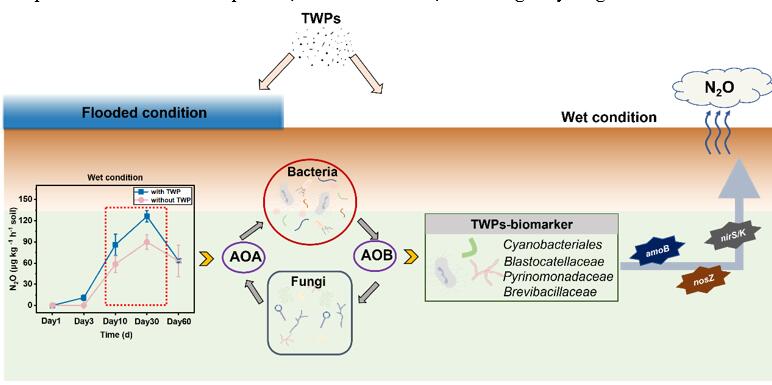Tire wear particles (TWPs), a growing environmental concern, pose significant threats to soil ecosystems. However, their impact on soil nitrogen cycling and associated greenhouse gas emissions during aging remains poorly understood, especially under varying moisture conditions.
In a recent study published in Science of the Total Environment (2024, 952, 175948), a research team led by Professor Gang Li from the Institute of Urban Environment, Chinese Academy of Sciences, revealed that TWP aging processes, dependent on soil moisture, significantly shift soil microbial communities and elevate nitrous oxide (N2O) emissions on drylands.
The researchers conducted a 60-day experiment simulating TWP aging in soils under wet and flooded conditions. They found distinct responses of soil microbes to TWPs: bacteria were more sensitive to wet conditions, while fungi showed greater sensitivity to flooded conditions. Notably, TWP input led to a marked increase in N2O emissions from dryland soils.
Key microbial taxa, including Cyanobacteriales, Blastocatellaceae, and Pyrinomonadaceae, were identified as "TWP-biomarkers" closely linked to N2O emissions. These taxa correlated strongly with changes in nitrogen cycling genes—specifically, ammonia oxidation gene amoB and N2O reduction gene nosZ—which played pivotal roles in regulating N2O release.
The study highlights that soil moisture drives TWP aging dynamics, altering microbial interactions and nitrogen transformation pathways. This cascade effect enhances N2O emissions, underscoring TWPs as an emerging contributor to greenhouse gas emissions and global warming. This work advances our understanding of TWP-induced environmental risks, offering critical insights into the complex links between microplastics, soil microbiomes, and nitrogen cycling.
This work was supported by the Fujian Provincial Natural Science Foundation of China (2023J05078), the International Partnership Program of Chinese Academy of Sciences (322GJHZ2023004MI) and Ningbo S&T Project (2021-DST-004).
